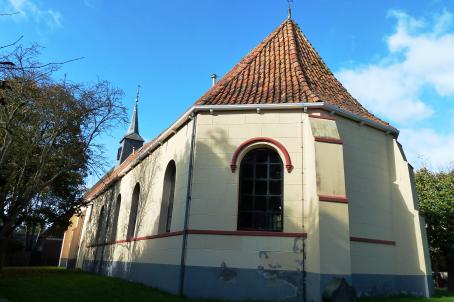Open Hofkerk
The organ was built by Hendrik Jan van der Molen around 1900. In 1978/79 the organ was restored by de Graaf. Since 2004 the organ has unfortunately hardly been used, and an electronic Allen organ, type Protégé, is used.
The organ was built by Hendrik Jan van der Molen around 1900. In 1978/79 the organ was restored by de Graaf. Since 2004 the organ has unfortunately hardly been used, and an electronic Allen organ, type Protégé, is used.
Reformed church rebuilt in 1784 on the site of the former church; internal pulpit with carved caryatids, mid 18th century, baptismal fence from 1630, nine pews from the 17th and 18th centuries. Gravestones include at least four from the 17th century and one from 1716. Three copper crowns. In the tower a belfry with a clock by Steen and Borchardt, 1756, diam. 97.5 cm. Mechanical tower clock B. Eijsbouts, Asten, 1913, no. 477.

Fish are fully present in this church: on one of the windvanes, on the pulpit and on the lectern. The Christian symbol is also the symbol of the former fishing village.
The church is a remnant of a Premonstratensian monastery founded in 1240 by a certain Gerke Harkema from Augustinusga , the Jerusalem monastery. In 1580 the monastery was largely demolished, only the fifteenth century brewhouse remained. In 1629 this was converted into a church, part of it was given the function of a residence for the minister in 1786. The tower is 19th century.